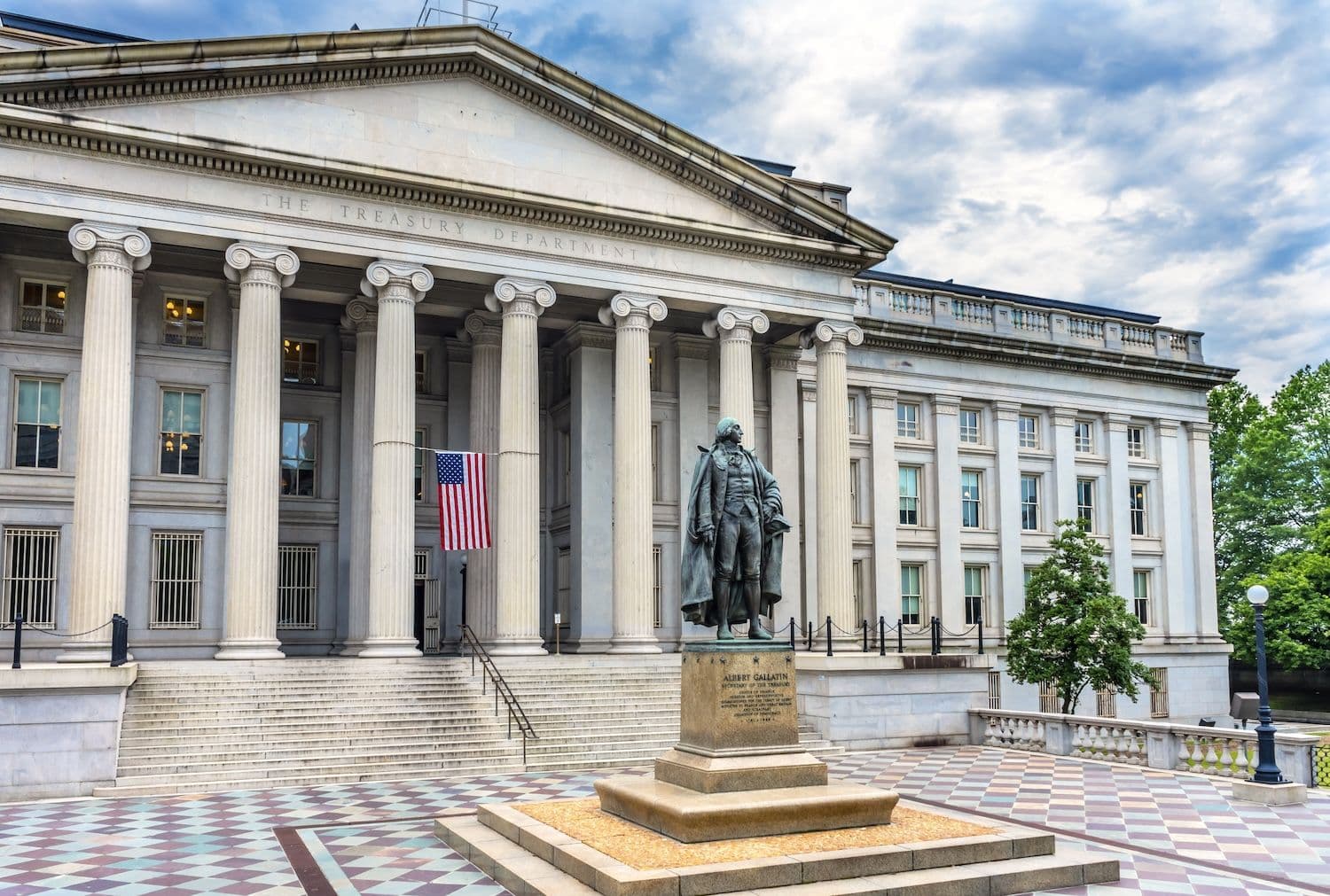Congressional legislation establishing a regulatory framework for stablecoins could fundamentally alter segments of the $29 trillion U.S. Treasury market, particularly short-term securities that back these dollar-pegged cryptocurrencies. The anticipated bill would legitimize stablecoins while potentially creating new volatility risks in Treasury bills as crypto markets become more intertwined with traditional finance.
What to Know:
- Congress is expected to pass legislation requiring stablecoins to be backed by liquid assets like Treasury bills
- Tether and Circle currently hold $166 billion in U.S. Treasuries, with potential growth to $2 trillion market by 2028
- Experts warn that rapid stablecoin liquidations could disrupt Treasury markets and create broader financial instability
Regulatory Framework Takes Shape
The Senate could pass the stablecoin bill as early as next week. The legislation would mandate that tokens be backed by liquid assets including U.S. dollars and short-term Treasury bills, with monthly disclosure requirements for reserve compositions.
Stablecoin issuers like Tether and Circle would need to purchase more Treasury bills to back their assets as the market expands. Circle debuted on the New York Stock Exchange on Thursday, highlighting the sector's push toward mainstream acceptance. Together, these two companies hold $166 billion in U.S. Treasuries, according to Bain & Company's financial services practice.
The stablecoin market currently stands at approximately $247 billion, based on data from crypto provider CoinGecko. Standard Chartered estimates this could surge to $2 trillion by 2028 if federal legislation passes. Treasury Secretary Scott Bessent has encouraged lawmakers to approve the bill, arguing it could boost demand for U.S. government debt.
Of the $29 trillion in outstanding Treasury securities, $6 trillion consists of bills. JP Morgan analysts project that stablecoin issuers could become the third-largest buyer of Treasury bills in coming years.
Market Stability Concerns Mount
Financial experts are raising red flags about closer ties between cryptocurrency and traditional markets. Cristiano Ventricelli, vice president and senior analyst of digital assets at Moody's Ratings, warns of potential spillover effects.
"In the event of a sudden loss of confidence, regulatory pressure, or market rumors, this could trigger large-scale liquidations, potentially depressing Treasury prices and disrupting fixed-income markets," Ventricelli said. "A problem in the stablecoin sector could spill over into broader financial markets, affecting institutions holding similar assets or that rely on stablecoin liquidity."
The Treasury Borrowing Advisory Committee noted in an April study that stablecoin growth at the expense of bank deposits could reduce banks' demand for U.S. Treasuries. This shift could impact credit growth as traditional banking relationships change.
Mark Hays, associate director for cryptocurrency and financial technology at Americans for Financial Reform, highlighted liquidity concerns. "If stablecoin issuers have to move those Treasuries quickly, or the market demands that, it could create some credit crunches there," he said.
Money market funds, which invest in short-term debt, face potential disruption from increased stablecoin activity. Pete Crane, president of Crane Data and a money market expert, said funds are monitoring the situation closely. "Treasury bills are normally so short in maturity that people don't concern themselves with price movements, but of course in case of a rapid liquidation the price is going to go down," Crane explained.
Historical precedents suggest caution is warranted. In 2022, crypto market turmoil caused Tether's stablecoin USDT to fall below its dollar peg, though without Treasury market impact. The following year, Circle's USD Coin (USDC) lost its peg after revealing reserves at failed Silicon Valley Bank. Both companies declined to comment for this story.
Former Treasury Secretary Janet Yellen previously stated that stablecoins didn't pose systemic risk due to their limited scale. However, widespread adoption following federal legislation could change this assessment significantly.
Potential Market Benefits
Some analysts see upside potential from increased government debt demand. Matt Hougan, chief investment officer at Bitwise Asset Management, views stablecoin legislation as strengthening dollar dominance globally.
"If we pass stablecoin legislation, dollars will be exported around the world, which will extend the strength of the dollar as the world's reserve currency," Hougan said.
Roger Hallam, global head of rates at Vanguard, suggests higher demand for short-term government debt could influence Treasury Department issuance strategy. Increased T-bill demand might encourage the Treasury to issue more short-term rather than long-dated debt to cover deficit funding needs.
Long-dated U.S. debt yields have risen recently, partly reflecting concerns over fiscal health. "You could choose to issue more bills to meet that demand, which would relieve some of the tensions we currently see in the market around the scale of future issues and who's going to buy all these bonds," Hallam said.
Closing Thoughts
The pending stablecoin legislation represents a significant step toward crypto market legitimization while introducing new risks to Treasury market stability. As the $247 billion stablecoin sector potentially grows to $2 trillion, its integration with traditional finance could reshape both cryptocurrency regulation and government debt dynamics.

